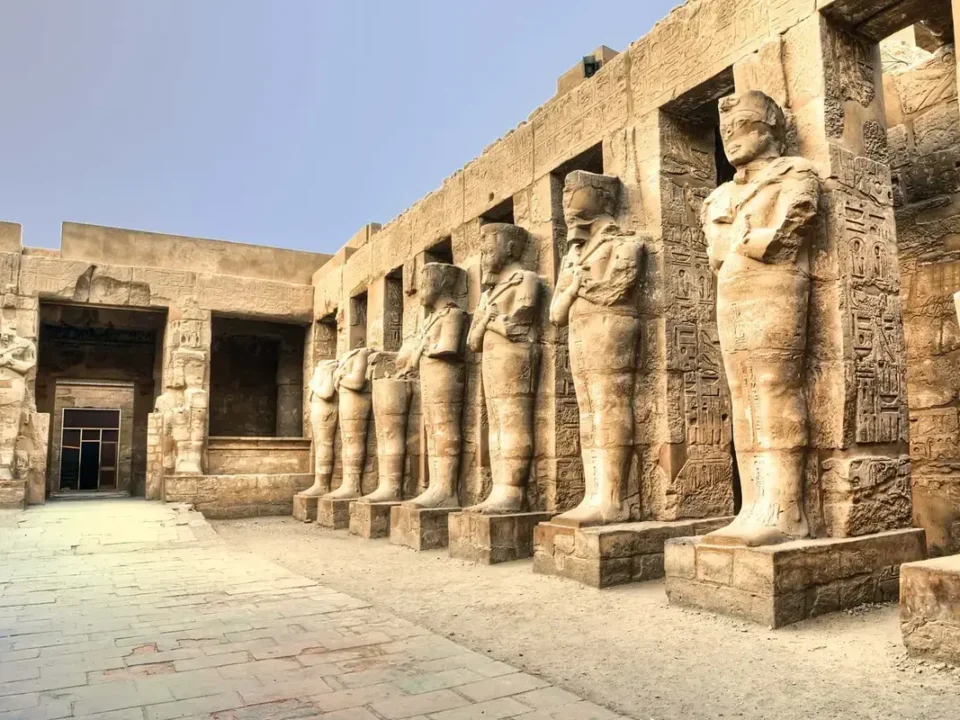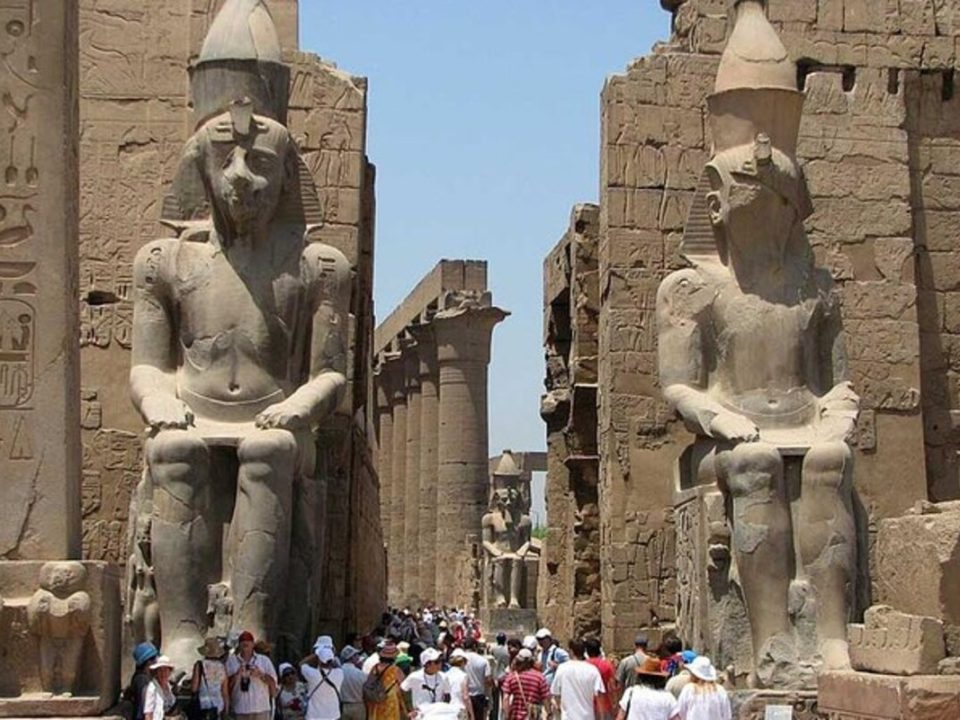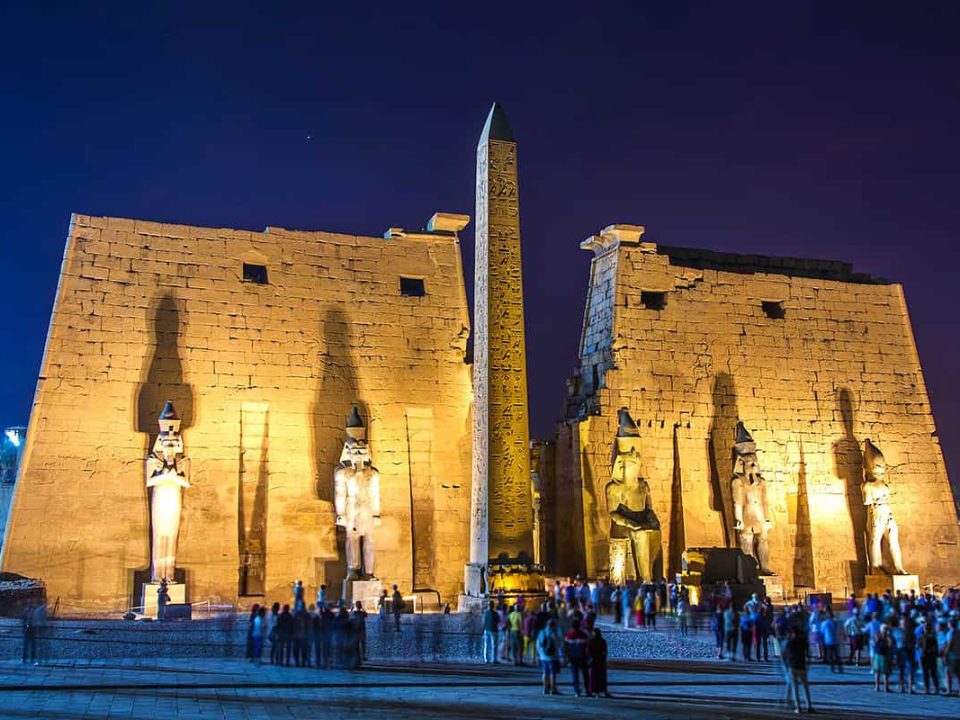Abu Simbel, Egypt: A Marvel of Ancient Engineering and Art
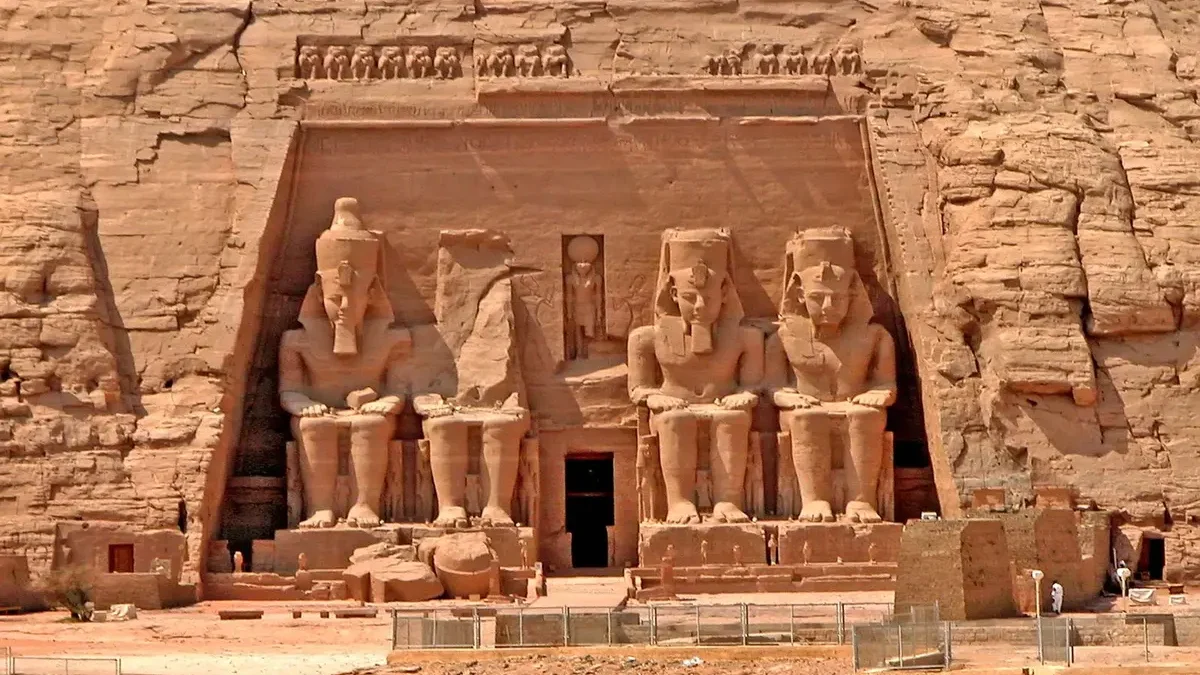
Abu Simbel, Egypt: A Marvel of Ancient Engineering and Art
Abu Simbel, located in southern Egypt near the border with Sudan, is one of the most spectacular and iconic archaeological sites in the world. Renowned for its massive rock-cut temples, the site reflects the grandeur and artistry of ancient Egyptian civilization. This comprehensive guide provides detailed information about Abu Simbel, including its history, discovery, theories, myths, and stories, making it a unique and informative resource.
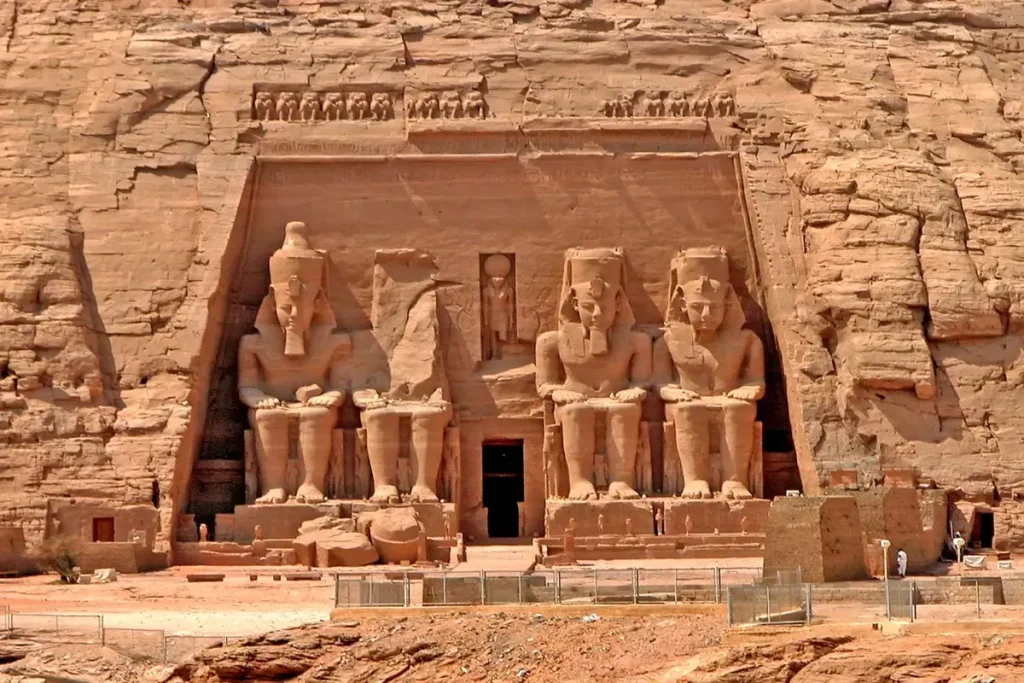
Historical Background
Construction and Purpose
Abu Simbel was constructed during the reign of Pharaoh Ramses II, one of Egypt’s most powerful and prolific builders, around 1264 BCE. The site comprises two massive temples: the Great Temple dedicated to Ramses II himself and the gods Amun, Ra-Horakhty, and Ptah, and the smaller Temple of Hathor dedicated to Queen Nefertari, Ramses II’s beloved wife.
- Great Temple: The Great Temple stands at 30 meters (98 feet) high and 35 meters (115 feet) wide. The façade features four colossal statues of Ramses II seated on thrones, each standing 20 meters (66 feet) tall. The interior of the temple is equally impressive, with a series of halls and chambers adorned with intricate carvings and statues depicting the pharaoh’s divine and military achievements.
- Temple of Hathor: The smaller temple, dedicated to Hathor and Queen Nefertari, features six statues on its façade: four of Ramses II and two of Nefertari, all standing 10 meters (33 feet) tall. The interior includes beautifully decorated chambers with scenes of the queen and the goddess Hathor.
Religious and Political Significance
The construction of Abu Simbel served both religious and political purposes. It was meant to honor the gods and celebrate Ramses II’s divine nature and achievements. Additionally, the temples were strategically located near the southern border of Egypt, serving as a powerful symbol of Egyptian authority and influence over the region.
Solar Alignment
One of the most remarkable features of the Great Temple is its solar alignment. Twice a year, on February 22 and October 22, the rising sun illuminates the inner sanctuary and statues of the gods seated beside Ramses II, leaving only the statue of Ptah, the god of darkness, in the shadows. These dates are believed to correspond to Ramses II’s coronation and birth.

Discovery and Relocation
Rediscovery by Western Explorers
Abu Simbel was rediscovered by Western explorers in the early 19th century. The temples had been forgotten and partially buried in sand for centuries. Swiss explorer Johann Ludwig Burckhardt first reported the site in 1813, but it was Italian explorer Giovanni Belzoni who uncovered the entrance to the Great Temple in 1817.
Relocation Project
In the 1960s, the construction of the Aswan High Dam posed a significant threat to Abu Simbel, as the rising waters of Lake Nasser would have submerged the site. In a remarkable feat of engineering and international cooperation, the temples were relocated to higher ground between 1964 and 1968.
- UNESCO Involvement: UNESCO launched an international campaign to save Abu Simbel and other Nubian monuments. The project involved cutting the temples into large blocks, some weighing up to 30 tons, and reassembling them at a new location 65 meters (213 feet) higher and 200 meters (656 feet) back from the original site.
- Engineering Marvel: The relocation project, costing around $40 million at the time, is considered one of the greatest archaeological engineering challenges ever undertaken. The temples were meticulously reconstructed to preserve their original orientation and solar alignment.
Theories, Myths, and Legends
Solar Phenomenon
The precise solar alignment of the Great Temple has fascinated scholars and visitors alike. Theories suggest that ancient Egyptian architects used sophisticated astronomical knowledge to design the temple. The twice-yearly illumination of the inner sanctuary symbolizes the pharaoh’s divine connection to the gods.
Ramses II and Nefertari
The temples at Abu Simbel highlight the relationship between Ramses II and Queen Nefertari. The depiction of the queen as equal in stature to the pharaoh in the Temple of Hathor is unique in Egyptian art. This representation emphasizes the queen’s importance and the deep affection Ramses II held for her.
Legends and Stories
Several legends and stories surround Abu Simbel, adding to its mystique:
- The Sun God’s Blessing: Local folklore tells of the sun god blessing the temple with light, symbolizing divine favor and protection.
- Curses and Spells: Some legends speak of curses placed on the temple to protect it from desecration, though these are more fiction than fact.
- The Sleeping Ramses: A popular tale among locals is that the colossal statues of Ramses II “sleep” through the ages, awakening during the solar alignment to receive the sun’s blessing.
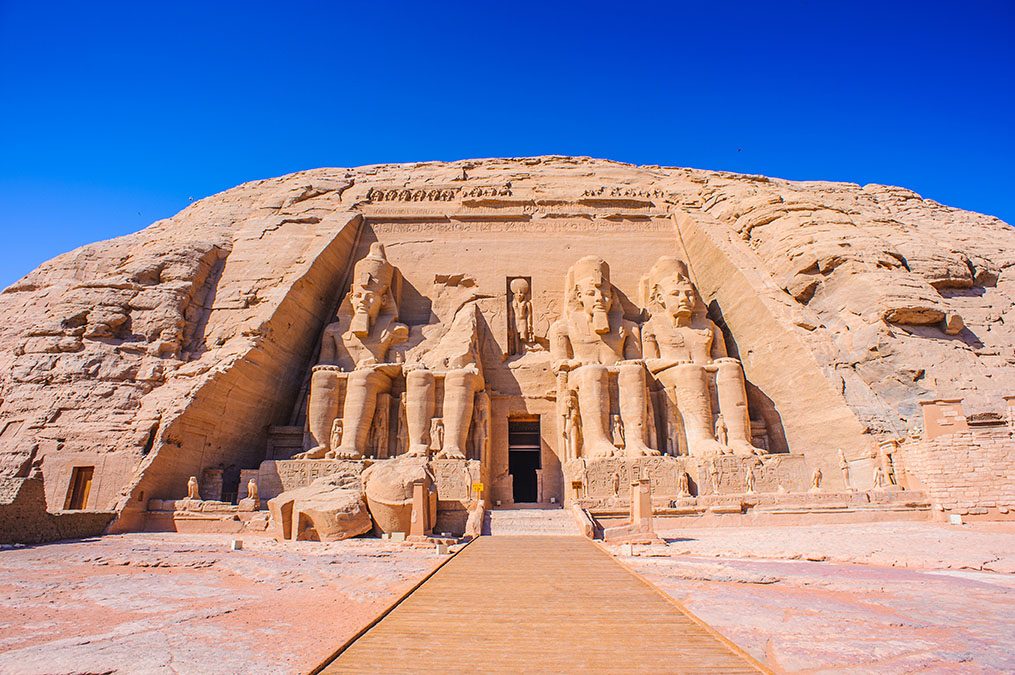
Unique Features and Attractions
The Colossal Statues
The four colossal statues of Ramses II at the Great Temple’s entrance are among the most impressive features of Abu Simbel. These statues, carved directly into the rock face, stand as a testament to the pharaoh’s power and the artistic prowess of ancient Egyptian craftsmen.
Interior Halls and Chambers
The interior of the Great Temple consists of a series of halls and chambers, each adorned with intricate carvings and reliefs depicting scenes of Ramses II’s military victories, religious rituals, and divine interactions. The most significant chamber is the inner sanctuary, where the solar phenomenon occurs.
Sanctuary and Solar Alignment
The inner sanctuary of the Great Temple houses statues of Ramses II and three gods: Amun, Ra-Horakhty, and Ptah. The precise solar alignment that illuminates these statues twice a year is a unique feature that continues to draw awe and wonder.
The Temple of Hathor
The smaller Temple of Hathor, dedicated to Queen Nefertari, features impressive statues and beautifully decorated chambers. The temple’s reliefs depict scenes of Nefertari making offerings to the goddess Hathor, highlighting her divine status and the close bond between her and Ramses II.
The Relocation Site
Visitors to Abu Simbel today can also appreciate the engineering marvel of its relocation. The site includes a visitor center with exhibits detailing the relocation project and the history of the temples.
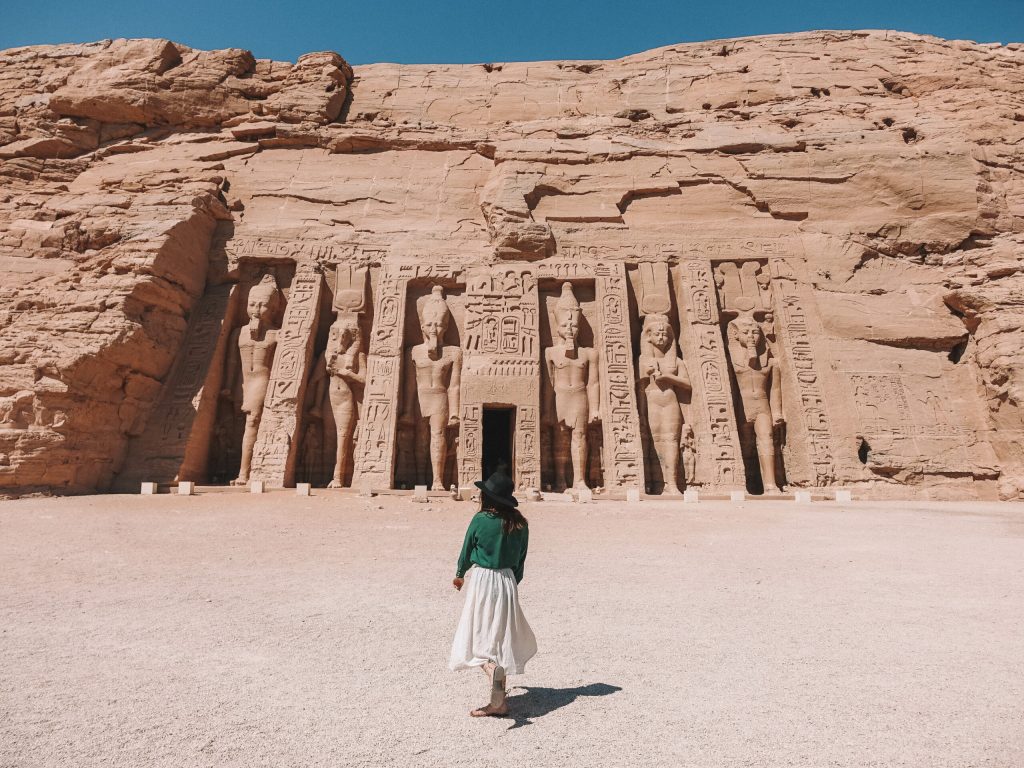
Activities for Tourists
Guided Tours
One of the best ways to experience Abu Simbel is through a guided tour. Knowledgeable guides provide historical context, share fascinating stories, and help visitors navigate the complex site. Tours can be tailored to different interests, from in-depth archaeological explorations to more general overviews.
Photography
Abu Simbel provides countless opportunities for photography. The colossal statues, intricate carvings, and dramatic desert backdrop create perfect conditions for capturing memorable images.
Light and Sound Show
The evening Light and Sound Show at Abu Simbel is a popular attraction that brings the history of the temples to life through dramatic lighting, music, and narration. The show provides a captivating way to learn about Ramses II, the construction of the temples, and the solar phenomenon.
Exploring the Interior
Exploring the interiors of the temples is an unforgettable adventure. Visitors can marvel at the intricate carvings, statues, and the architectural genius that went into creating these monumental structures.
Practical Tips for Visiting Abu Simbel
Best Time to Visit
The best time to visit Abu Simbel is during the cooler months from October to April. The weather is more comfortable for exploring, and the site is less crowded compared to the peak tourist season in the summer.
Getting There
Abu Simbel is located about 280 kilometers (174 miles) south of Aswan. Visitors can reach the site by:
- Flight: The quickest way to get to Abu Simbel is by taking a flight from Cairo or Aswan. The flight takes about 45 minutes, and there are regular daily services.
- Car/Bus: Travelers can also reach Abu Simbel by road. Private cars, taxis, and tour buses make the journey from Aswan, which takes about 3 to 4 hours. The road trip offers scenic views of the desert landscape.
- Lake Nasser Cruise: For a more leisurely and scenic journey, visitors can take a cruise on Lake Nasser, which includes a stop at Abu Simbel.
Entrance Fees and Tickets
Tickets for Abu Simbel can be purchased at the site entrance or through tour operators. It is advisable to arrive early to avoid long lines and to ensure availability, especially for the limited number of tickets for the Light and Sound Show.
What to Bring
- Comfortable Footwear: Wear sturdy, comfortable shoes suitable for walking on uneven terrain.
- Sun Protection: Bring a hat, sunglasses, and sunscreen to protect against the strong sun.
- Water and Snacks: Carry water and light snacks, as there are limited facilities inside the complex.
- Camera: Don’t forget your camera to capture the stunning views and details of the temples.
- Cash: Bring cash for purchasing tickets, souvenirs, and tips.
Safety Tips
- Stay Hydrated: The desert environment can be dehydrating, so drink plenty of water.
- Be Cautious with Vendors: Be aware of aggressive vendors and scam artists. It’s best to agree on a price before purchasing goods or services.
- Follow Regulations: Adhere to the site’s regulations, including respecting the monuments and not climbing on the statues.
Nearby Attractions
Aswan
After visiting Abu Simbel, travelers can explore Aswan, a city rich in history and culture. Key attractions include the Aswan
High Dam, the Philae Temple, and the Nubian Museum.
Lake Nasser
Lake Nasser, one of the largest man-made lakes in the world, offers opportunities for fishing, boating, and exploring additional ancient ruins submerged during the creation of the lake.
Nubian Villages
Visiting Nubian villages around Aswan provides a unique cultural experience. Visitors can learn about the traditions, lifestyle, and crafts of the Nubian people, who have inhabited the region for millennia.
Unique Features and Emotional Impact
Architectural Wonder
The temples of Abu Simbel stand as a testament to the ingenuity and ambition of ancient Egyptian civilization. Their sheer size, precise alignment, and complex construction continue to amaze and inspire engineers, architects, and visitors.
Connection to History
Standing before the temples of Abu Simbel provides a profound connection to history. Visitors are transported back in time, imagining the lives of the pharaohs, laborers, and craftsmen who contributed to these monumental achievements.
Sense of Awe
The experience of seeing the temples up close evokes a sense of awe and wonder. The timeless beauty and grandeur of these ancient structures leave a lasting impression on all who visit.
Spiritual Reflection
For many, visiting Abu Simbel is a spiritual journey. The temples’ alignment with celestial bodies and their role in ancient Egyptian religion offer a unique opportunity for reflection on humanity’s quest for immortality and understanding of the universe.
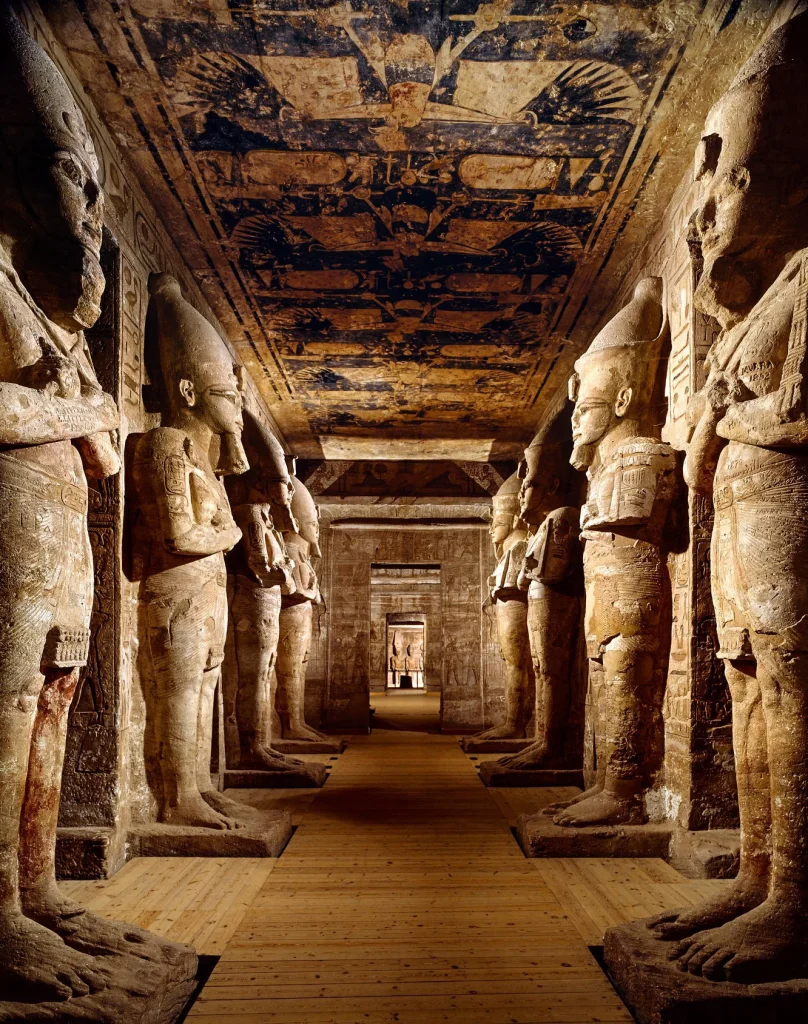
Conclusion
Abu Simbel, with its enduring grandeur and profound historical significance, is truly one of the world’s most extraordinary landmarks. From the Great Temple of Ramses II and the enigmatic solar alignment to the fascinating relocation project and the serene Temple of Hathor, Abu Simbel offers a wealth of experiences for visitors.
As a must-visit destination, Abu Simbel invites travelers to immerse themselves in the mysteries and majesty of ancient Egypt. Whether exploring the monumental structures, learning about the pharaohs’ legacy, or simply marveling at the engineering prowess of the ancient builders, visitors are sure to leave with lasting memories.
Plan your visit to Abu Simbel, embrace its unique features and historical significance, and discover why it remains one of the most beloved and iconic destinations in the world. From its architectural wonder and spiritual reflection to its rich cultural heritage and emotional impact, Abu Simbel offers a magical journey into the heart of ancient Egypt.
Links
Go To Europe
Go to Asia
Go To Africa
Go to America
-
Abu Simbel, Egypt: A Marvel of Ancient Engineering and Art
Abu Simbel, Egypt: A Marvel of Ancient Engineering and Art Abu Simbel, located in southern Egypt near the border with Sudan, is one of the most […]


